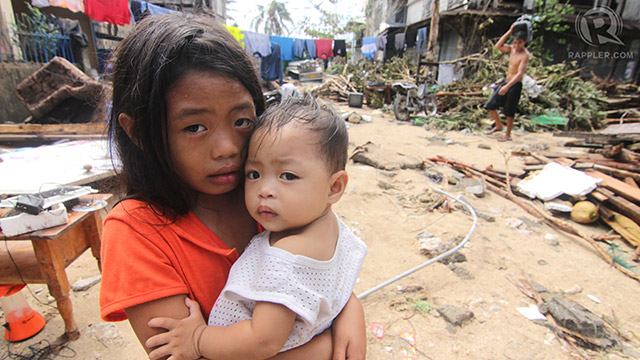SUMMARY
This is AI generated summarization, which may have errors. For context, always refer to the full article.

MANILA, Philippines – With food insecurity as a major threat in the areas affected by Super Typhoon Yolanda (Haiyan), the world’s largest anti-hunger aid agency has stepped up its initiative – ensuring food not only reaches survivors but provides them with essential nutrients.
In an interview with ANC, the ABS-CBN News Chanel, UN WFP Philippines’ Head of Food Security Dipayan Bhattacharyya emphasized the importance of providing food fortified with vitamins and minerals to the typhoon victims.
“They need extra support, and their home-cooked food may not be enough to revive their nutritional status,” he said.
The damage in properties, said Bhattacharyya, makes it likely that survivors will be unable to cook and would need something ready to eat.
Since Wednesday, November 13, the aid agency has been supplying Tacloban – the city hardest hit by typhoon Yolanda – with tons of high energy biscuits (HEB).
“Through years of research, we have developed something called high energy biscuits, which looks like any normal biscuit, but it’s not available in the normal market… It contains 15 essential minerals and vitamins as well as 450 kilocalorie and 10 grams of protein,” Bhattacharyya explained.
“People in disaster, if they eat one packet, they can survive for some time,” he added of the HEB. Nutrients, when digested, are converted to energy.
Yolanda battered central Philippines on November 8, washing away homes, causing deaths in the thousands, and leaving survivors scouring for food.
Undernourished, malnourished children
Since food consumed during calamities is not as diverse as during non-calamity situations, WFP Philippines is also addressing undernutrition and malnutrition among children in affected areas.
With the help of government, the humanitarian organization is distributing what is called “Plumpy Doz” to children 2 years old below. Two scoops will provide the recipient with essential vitamins and minerals to prevent undernutrition.
“What they need is something which is concentrated food particularly for children because they are the most vulnerable,” Bhattacharyya said.
“The first two years of a child is most important. Sixty percent of your mental development and physical development would happen in the first two years. That’s why we need to arrest further deterioration in times of disaster,” he explained.
The humanitarian organization distributes what is called a “Supplementary Plumpy” to children 2 years old below who have already reached moderate malnutrition.
A Supplementary Plumpy is almost similar to Plumpy Doz in formulation but with higher levels of fortification, explained Bhattacharyya.
Both Plumpy Doz and Supplementary Plumpy are ready to eat.
For children 2 to 5 years old, a micronutrient powder is also being distributed with the help of government. The powder can be sprinkled on top of any food.
Continuity in aid
Like many first responders and aid workers, the WFP said it was difficult to assess the extent of assistance needed given the damaged roads in the aftermath of Yolanda.
Sustaining the humanitarian assistance as typhoon victims rebuild their lives is a concern the agency also wants to address.
Bhattacharyya said 2.5 million Filipinos who were provided with immediate food assistance will eventually be covered under UN WFP Philippines’ livelihood recovery programs, as part of its long-term plan in partnership with the government. – Rappler.com
Add a comment
How does this make you feel?
There are no comments yet. Add your comment to start the conversation.